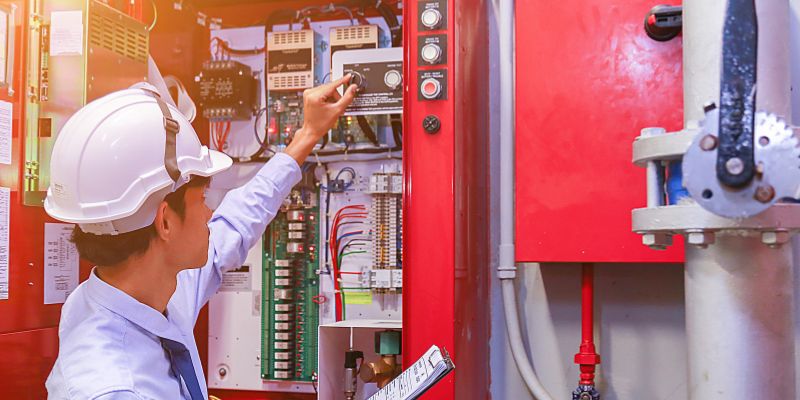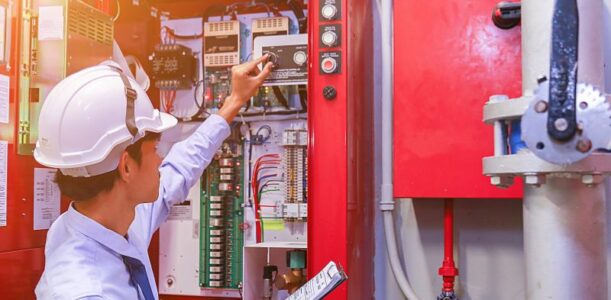Get A Quote

Common Fire Alarm Signals
There are three main types of fire alarm system signals and understanding how to differentiate between them is vital to keeping occupants safe and maintaining a working system.
Trouble Signals
Instead of openly stating an emergency, trouble signals alert you to a maintenance or operational issue that must be fixed. Typically, this signal is yellow, and certain fire alarm systems may even identify the kind and location of the issue.
Signals of trouble or fault point to a flaw or issue within the fire alarm system. These signals are crucial for spotting problems that need to be fixed right away to avoid future issues or potential system failure. If your fire alarm systems need to have the batteries changed, a trouble signal will likely occur. It is important to address trouble signals promptly to ensure the integrity of the fire alarm system is maintained.
The Fire Alarm Control Panel (FACP) produces an auditory and visual indication of the issue when a difficulty signal is received there.
Common reasons for a trouble signal:
- Device connectivity or faulty wiring
- Ground faults
- Power loss in the FACP
- Backup power supplies have low battery voltage
Alarm Signals
Alarm signals are the most crucial and should be treated with promptness because they indicate a potential fire emergency. A fire alarm system activates an alarm signal to warn building inhabitants when it detects heat, smoke, pull, flow, or other indicators of a fire.
Alarm signals are most triggered by the following devices:
- Heat or smoke detectors
- Water flow switch
- Manual pull stations
The FACP activates alerting appliances such as strobes, horns, and voice evacuation systems to inform building residents when an alarm signal is activated. Emergency services are called and dispatched, and the monitoring firm is alerted of the situation.
When the system detects an emergency that needs your urgent attention, an alarm signal is sent out. However, it is crucial to realize that some circumstances can result in false alarms. You should always take your fire alarm signals seriously but note that sometimes a false alarm can be triggered.
Smoke detectors that are old or dirty will not accurately gauge the air and may unintentionally sound the alarm. A false alarm may also result from poor fire alarm maintenance. The alarm being intentionally set off is the least likely scenario and can be avoided by installing pull station covers on the pull stations.
Supervisory Signals
Supervisory signals are intended to inform the building’s fire alarm control panel (FACP) and the monitoring company of the status of the fire alarm system’s equipment and components. These signals, which often denote non-emergency circumstances, are essential to the system’s overall functionality.
Common situations that cause supervisory signals include:
- Emergency generators with low fuel levels
- Water-based systems having valve position changes
- Dry sprinkler systems with low air pressure
If a supervisory signal is received at the FACP, the issue must be promptly attended to so the system remains working properly. Typically, the FACP signals with a yellow light and fast beeping noise that indicates which trouble signal was triggered. While supervisory signals are generally not due to an imminent threat, it does imply the need for a professional to seek out and fix the issue.
High Rise Security Systems, HRSS, with SMG Security Holdings, SMG understands the importance of providing innovative fire and life safety systems for your commercial property. We are an industry leader in commercial fire and life safety systems serving the Chicagoland area and offer customizable integrated solutions to meet your business’s unique needs.
HRSS/SMG brings decades of experience in the commercial fire and life safety industry. Our knowledgeable technicians can assist with your fire alarm trouble indicators, ensuring you maintain the highest level of safety and protection for your occupants and property. Contact us to learn more about our comprehensive fire alarm system services including custom design, installation, maintenance, inspections, and 24/7/365 monitoring.



